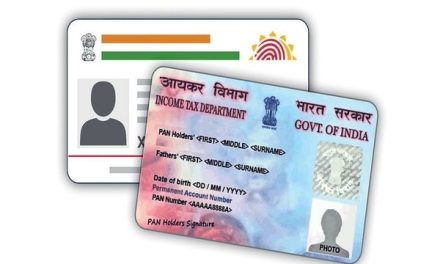Yes Bank, India’s fifth largest private sector lender, is in the middle of a crisis as the Reserve Bank of India (RBI) has taken over its affairs and placed strict limits on its operations. The RBI is also devising a rescue plan for the bank.
Yes Bank’s financial position has been undergoing a steady decline largely due to its inability to raise capital. The bank has also experienced serious governance issues and practices in recent years, leading to a steady decline.
Yes Bank has struggled to raise capital it needs to stay above regulatory requirements as it battles high levels of bad loans. It has been trying to raise $2 billion in fresh capital since late last year, and in February delayed its December-quarter results.
The Yes Bank has more corporate customers than retail in its list of customers. Most of the companies Yes Bank has given loans are in loss. These companies are on the verge of bankruptcy, that is the reason that the bad loan of the yes bank has increased.
Now let us discuss the reasons of Yes Bank crisis – :
1. Deteriorating Financial Position
The declining financial position of the bank can be easily understood by the declining share price. The share price of the yes bank was 400 rupees in 2018 which is now standing at just 16.60 as of 6 March 2020.
The financial condition Deteriorated due to its inability to raise capital to address potential loan losses. The bank was experiencing losses and inadequate profits in the last four quarters.
2. Corporate Customers:
The Yes Bank has more corporate customers than retail in its list of customers. Most of the companies Yes Bank has given loans are in loss. That is the reason that yes bank did not receive its loan back on time. The bad economic condition of the companies deteriorated the financial condition of the yes bank also.
3. Governance Issues
One of the founders of the yes bank Mr. Ashok Kapur had died in the 26/11 Mumbai attack. So the wife of late Ashok Kapur wants her daughter to be included in the Board of Directors that is opposed by the wife of Rana Kapur.
So the bank had serious governance issues. That is the reason former Deputy Governor of RBI Mr.R Gandhi was included in the BOD of the yes bank. Ultimately the bank reported NPA of Rs 3,277 crore in 2018-19.
4. Outflow of Liquidity
Money deposited by the customers is the backbone of the banking industry. If rumour arises that a particular bank may be in problem in the future; suddenly all the customers start withdrawing money. This practice put the bank into the dock and the bank’s deposit started deteriorating followed by a decline in profit.
The Yes bank had the deposit book of Rs 2.09 lakh crore at the end of September 2019.
5. Huge Liabilities:
The Yes Bank has a total liability of 24 thousand crore dollars. The bank has a balance sheet of about $40 billion (2.85 lakh crore rupees). The Yes Bank has to pay $ 2 billion to increase the capital base.
So these were some reasons behind the pitiable condition of the yes bank.
WHAT HAPPENS TO YES BANKS CUSTOMERS?
For now, it’s a wait-and-watch game. The RBI has unveiled a draft revival plan (more on that later) aimed at pumping fresh money into Yes Bank. However, as things stand, Yes Bank customers cannot withdraw more than Rs 50,000 from their accounts, except in certain specific situations.
On Friday, customers faced hurdles withdrawing money from ATMs or accessing internet banking due to apparent network issues at Yes Bank. As of Friday evening, there was no clarity on the status of these services and when they would be fully restored.
The government sent out a message of assurance with Finance Minister Nirmala Sitharaman saying that the immediate priority was to ensure that Yes Bank customers are able to withdraw money within the Rs 50,000 limit.
RBI’S REVIVAL PLAN
Addressing a press conference in Delhi, Finance Minister Nirmala Sitharaman said that the State Bank of India had expressed interest in investing in Yes Bank. Sitharaman’s comments came just as the Reserve Bank of India unveiled a draft revival plan.
Under the draft plan, SBI would invest money in Yes Bank and own 49 per cent of the restructured bank. Yes Bank’s market value would also be revised to Rs 5,000 crore with 2,400 crore equity shares with a value of Rs 2 each.
The capital infusion would happen with SBI paying at least Rs 10 per share and not the face value of Rs 2. According to a back-of-the-envelope calculation, at Rs 10 per share, SBI would have to fork out Rs 11,760 crore to own 49 per cent of the restructured Yes Bank.
Now, all eyes now will be on the State Bank of India. Earlier in the day, SBI chairman Rajnish Kumar, while assuring Yes Bank customers that their interests will be protected, had said that the bank would take a call on its next move based on the revival plan prepared by the RBI.
SBI — as well as the general public — now has time until Monday to comment or make suggestions on the RBI’s draft plan. Once the RBI finalises its draft plan, the SBI will likely reveal its hand. There is already speculation that SBI might lead a consortium or tie up with the Life Insurance Corporation of India to invest in Yes Bank.
The last time when a PSB was brought in to save a private bank happened in early 2000 when the Global Trust Bank (GTB) collapsed because of its exposure to the stock market. The bank had lost a lot of money post the Ketan Parekh scam. In 2004, the RBI solemnised GTB merger Oriental Bank of Commerce (OBC). In 2010, the RBI encouraged another merger between Bank of Rajasthan and ICICI Bank.











